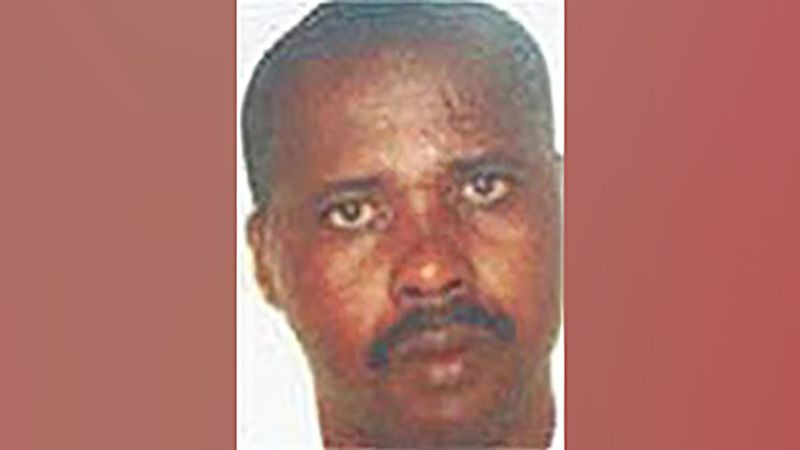Every episode is chock-full of mouthwatering regional specialties prepared by chefs all over the country. For those wanting to follow in Stanley Tucci‘s footsteps, below is an episode-by-episode guide to all the
Editor’s Note: All-new episodes of “Stanley Tucci: Searching for Italy” air 9 p.m. ET Sundays only on CNN. Missed a week? Catch up on CNNgo. You can also watch season one on Discovery+.
CNN
—
It’s a place of terraced lemon groves, a paradoxically warm mountain breeze, and a powerful fat-killing gene carried by a few lucky residents.
Limone sul Garda, a picturesque fishing village set on the shores of Lake Garda in Italy’s northern Lombardy region, is an unusual destination of barely 1,000 residents.
It is the most northern spot in the entire world where lemons are naturally grown and has an exceptionally mild climate, considering its location at the feet of the Alps.
Perhaps this mix of factors is what has led to the village’s claims of a secret “elixir” to a healthy, long life.
Many locals are apparently blessed with great digestive abilities that allow them to stuff themselves with cream-filled cakes and greasy cold cuts without worrying about expanding waistlines or heart problems.
These residents have what they call the “Limone gene,” which contains a special protein that destroys lipids and keeps blood fluid.
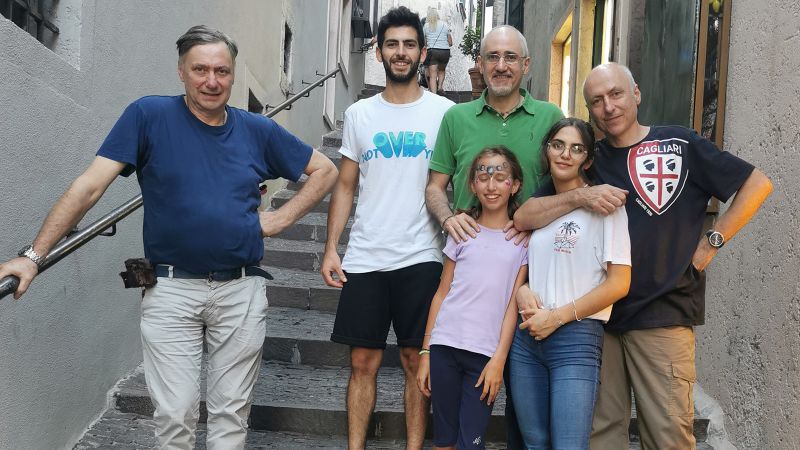
For 40 years, the people of Limone sul Garda have been under scientific observation, with gene-carrying villagers tested as lab rats.
Of the 1,000 residents, half are Limone born and bred; and of those 500, 60 have the gene.
“The gene runs in my family,” says shopkeeper Gianni Segala, who jokes that the villagers are used as “blood bags” for scientists.
“My brothers and I, my mother – who’s 96 and still very bright – and all my children carry it.
“Since the 1980s we’ve been giving away our blood for recurrent tests, we’ve almost been bled out entirely,” he adds wryly.
He recalls the first time the doctors had him swallow a sugary dose of whipped cream every two hours to monitor his bloods.
“They took my blood after each bite, it was so sweet and greasy I felt nauseous, but even though I ate a lot of it my blood instantly destroyed the fats without assimilating them. By nightfall I almost fainted [due to blood loss],” he says.
However, even though people like Segala may never have to fret about clogged veins and blood clots, he says he leads a very normal life and is “no Superman.”
Cesare Sirtori, professor of clinical pharmacology at the Università degli Studi di Milano, leads the team that first identified what Limone locals dub the “elixir” protein, calling it A-1 Milano. He says the people of Limone have exceptionally low HDL cholesterol levels (in a 7-15 range when normally it should be 40-60) which appears to be the result of a genetic mutation within the protein carrier.
“Having low HDL cholesterol – given that it is classed as ‘good’ cholesterol – is bad for you and leads to heart problems such as potential strokes, but in these locals it has an inverse positive effect,” he says.
“And while 99% of protein genetic mutations trigger diseases and pathologies, this one has determined the absence of vascular diseases in carriers.” Sirtori is now studying the Limone gene to see how it could further the fight against atherosclerosis.
In 2000, he and his team lab-synthesized the Limone protein and injected it into rabbits. The animals saw a significant decrease of blood clots in their arteries.
He discovered that in Limone it is a dominant gene, found in the DNA of five-year olds, youths and elderly alike.
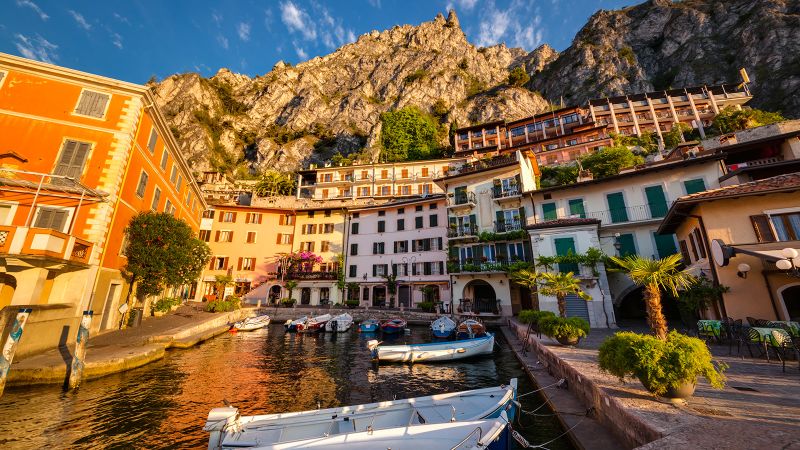
The gene was first identified in the blood of a Limone train driver, an ancestor of Segala, who had been involved in an accident in Milan (hence the protein name A-1 Milano) and was taken to the hospital. Doctors who cured him were baffled by his astounding blood results, and kickstarted a massive screening campaign in the village.
“I was just a kid when my blood was first tested, and the doctors come regularly to monitor how our gene is behaving,” says Giuliano Segala, Gianni’s son.
“The fact that I carry [the gene] gives me a sort of life insurance – I feel more shielded health-wise and confident I won’t have clogged arteries or die of a heart attack when I grow old.”
Even though he does occasionally feel like a guinea pig, Giuliano, who’s slim and fit, admits to happily indulging in greasy cured meats including mortadella, salami and even lard – just like his grandmother, who looks after herself and cooks for the whole family. The younger Segalas inherited the gene from her.
“I never get stomach ache and I eat whatever I feel like. I love cotolette (breaded and fried veal cutlets), fried foods, salamis, and I also love to drink. I sleep like a baby,” says Giuliano. But just because he’s a carrier of this superb gene doesn’t mean he always over-eats. He also exercises regularly, hiking with his father up mountain peaks to enjoy the spectacular views of nearby Lake Garda.
Sirtori is still hoping to analyze what happens if two carriers conceive a child. So far it’s been either the father or mother of a carrier to pass on the gene.
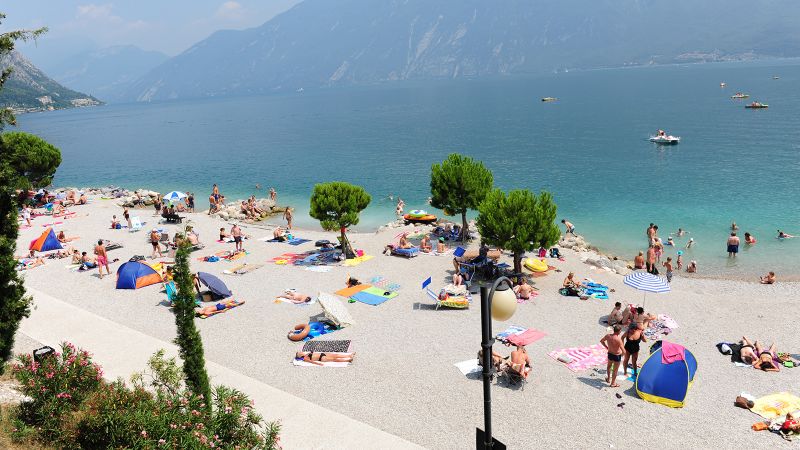
Sirtori says that this genetic mutation, and its associated health benefits, is unique to Limone – and can’t even be found in nearby villages. However, he isn’t interested in digging into why that is.
But others have. Antonio Girardi, a local hotelier who has traced back the entire family tree of the Limone gene transmission to the 18th century, believes the surroundings, climate and natural produce play a key role.
“It can be this warm climate year-round – we never have snow or ice, which is also why lemons have been growing in this northern area here for centuries,” he says.
“Or perhaps it’s thanks to the extraordinary extra virgin olive oil we’re all weaned on, and the fresh lake fish we eat.”
Ever since the Renaissance, wealthy families have flocked to Limone’s shores for vacations, breathing in the sweet Alpine air mixed with citrus fragrances, and benefiting from the climate.
Girardi keeps a phone book with the contacts of all 60-something gene carriers. The other residents are split between those born in Limone and those from from neighboring towns or abroad, lured by the paradisaical setting and sleepy vibe of Limone’s maze of cobbled alleys, and white passageways and dwellings.
In the past villagers were either fishermen or mountain woodcutters who transported logs on donkey to be sold to the ships at the harbor. Today they all work in the tourist sector which draws big money.
Families stroll along the picturesque harbor and tourists visit the fishing museum. The cozy beaches lure sunbathers and sailing amateurs in summer while hikers explore the ragged tall cliffs looming over the lake.
“These mountains act as natural shields protecting us from cold winds and capturing the sun, keeping temperatures constantly warmish,” says Girardi.
“We must thank this very pleasant, extraordinary micro-climate which has gifted our people with such a natural elixir.”
• Sign up to CNN Travel’s free nine-part Unlocking Italy newsletter for insider intel on Italy’s best loved destinations and lesser-known regions to plan your ultimate trip. Plus, we’ll get you in the mood before you go with movie suggestions, reading lists and recipes from Stanley Tucci.
Don't Miss
CNN — If you’re a parent, heading out the door before a car ride with the kids probably goes a
Editor’s Note: Monthly Ticket is a CNN Travel series that spotlights some of the most fascinating topics in the travel
CNN — Neil Diamond sang “Sweet Caroline” at the Broadway opening of his musical” A Beautiful Noise,” five years after
CNN
—
Ritz-Carlton’s highly-anticipated superyacht cruise has finally made its debut, three and a half years after its maiden voyage was originally scheduled to begin.
Evrima, the first of three custom-built yachts from the famous hotel chain’s Ritz-Carlton Yacht Collection, began a seven-night cruise from Barcelona, Spain to Nice, France on October 15.
The 190-meter vessel, which can accommodate 298 passengers, is made up of 149 suites with a private terrace, as well as floor to ceiling windows, and features an infinity pool, a wine vault, a Ritz-Carlton Spa, a nightclub and its very own “marina.”
Rates for a one-week stay start at $6,400 per person for Mediterranean voyages, while Caribbean voyages begin at $5,100 per person, with accommodation options ranging from standard cabins, to two-story “loft-style” apartments, and a sprawling 1,091- square-foot “owner’s suite” with a private hot tub.
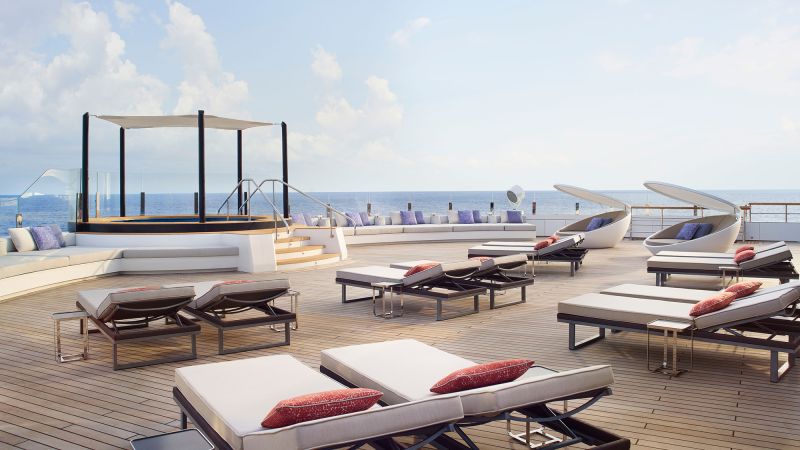
Those who splash out of these luxury cruises can expect “service at a gold standard” – the yacht claims one of the highest staff and space to guest ratios at sea – as well as fine dining experiences, complimentary water sports, and on-board entertainment.
There’s also a dedicated on-board children’s facility with a jam-packed program for those aged from four to 12.
Evrima, which means discovery in Greek, will sail to a range of destinations throughout the Mediterranean, the Caribbean, as well as Central America and South America, with most cruise durations ranging from seven to 10 nights.
The luxury yacht is to be followed by two others, Ilma and Luminara, currently under construction at Chantiers de l’Atlantique shipyard in Saint-Nazaire, France.
Ritz-Carlton first announced plans to move into the luxury yachting world back in 2017, describing the venture as “a hybrid between luxury cruising and yachting.”
“The Ritz-Carlton Yacht Collection is revolutionizing the luxury cruising industry, creating an entirely unique category designed for those in search of unmatched getaways, highly curated itineraries, insider access and a level of personalization previously unseen in the space,” Douglas Prothero, chief executive officer for the Ritz-Carlton Yacht Collection said in a statement.
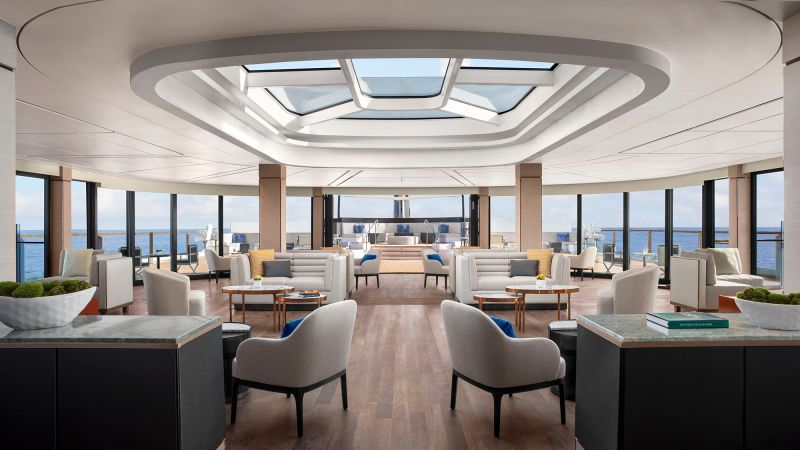
“Every element of the luxury yachting experience was considered when designing and creating Evrima, and we are excited to deliver unforgettable journeys for both longtime cruisers and those who are new to the industry.”
All three of the superyachts will be available for private charter. While Ritz-Carlton have not revealed the charter price, it’s safe to assume that those who opt to hire the vessels out will need pretty deep pockets.
“We are thrilled to introduce The Ritz-Carlton Yacht Collection and usher in an exciting new chapter for this beloved brand,” says Chris Gabaldon, senior vice president for luxury brands at Marriott International.
The launch of Evrima has been rescheduled several times due to supply chain issues and the global pandemic.
Earlier this month, the Four Seasons announced plans for its first vessel, a 14-deck, 207-meter-long superyacht with 95 suites, which is scheduled to enter service in late 2025.
(CNN) — It wasn’t until he moved near to an airfield in the UK over a decade ago that mechanical engineer Ashok Aliseril Thamarakshan began to seriously consider learning to fly a plane.
He got his first taste of flying a few years later, when his wife Abhilasha bought him a 30-minute flight experience for his birthday.
Aliseril, who is based in English county Essex, booked in some flying lessons at a local airfield and flew to the Isle of Wight, an island off the south coast of England, during his first session.
“That was quite an eye opener into how it [flying] gives you the freedom to just go places if you have that ability, and access to an aircraft,” he tells CNN Travel. “So that really got me hooked.”
Aliseril got his private pilot’s license in 2019 and soon began hiring planes for short flights.
Amateur build

Engineer Ashok Aliseril spent 18 months building a four-seater plane during the pandemic, helped by his daughter Tara.
Courtesy Ashok Thamarakshan
But as his family grew — he and Abhilasha now have two daughters, the two-seater planes typically available for private hire became even less suitable, and he began to mull over the idea of buying his own plane.
Aliseril briefly considered buying an older aircraft, and looked at some that had been built in the 1960s and 1970s.
However, he says he felt uneasy about the prospect of flying his family in an older aircraft that he wasn’t familiar with, and didn’t think it would be a “comfortable journey.”
Aliseril began to look into the possibility of building a plane himself, reasoning that this would allow him to gain a better understanding of the aircraft so that it would be easier to maintain in the long term.
After researching self-assembly aircraft kits, he came across a four-seater plane manufactured by South African company Sling Aircraft that ticked all the right boxes.
“This was pre Covid, where travel was still very easy at the time,” he explains. “I ordered the first kit when I got back. And by the time it arrived, the UK was in full lockdown.”
Aliseril says his colleagues, some of whom had experience with building aircraft, initially offered to help with the build. But the restrictions brought about by the Covid-19 pandemic, which had spread across the world by this point, meant that this wasn’t possible.
Home assembly

Aliseril’s home improvement experience came in handy while constructing the four-seater Sling TSi aircraft.
Courtesy Ashok Thamarakshan
Amateur-built airplanes in the UK are investigated by the CAA, who will issue a “Permit to Fly” once satisfied that the aircraft is fit to fly.
Although the start of the build was delayed slightly due to the Covid-19 restrictions in place in the UK at the time — the Light Aircraft Association inspector assigned to the project was required to visit his working space beforehand — Aliseril was able to begin in April 2020.
While he notes that his engineering background helped in some ways, he believes that it was actually his home improvement experience that proved most useful while constructing the aircraft, which has a length of 7.175 meters and a height of 2.45 meters.
“These aircraft kits are designed for any amateur to build, provided you’re a bit hands-on and you’ve got experience working with some specialist tools,” he adds, describing the detailed “Ikea furniture type instructions” with drawings that came with the kit.
“I would say generally, anyone can get involved in these sorts of builds.”
Lockdown project

He built a shed in his garden to complete the build.
Courtesy Ashok Thamarakshan
Aliseril completed the work himself, drafting in Abhilasha to assist with some of the sections that required more than one pair of hands. Their eldest daughter Tara, now seven, was on hand for tasks such as removing the plastic from each of the components.
By the end of summer 2020, Aliseril had built the tail and the wings. He began constructing the fuselage section in October, when the next part of the kit arrived.
Although he’d initially planned to hire a workshop to construct the aircraft, Aliseril feels that creating a workspace at his home was the better choice.
“I could just step into the shed and work on it,” he says. “So having everything just in the back garden really helped, even though space was tight.”
Each stage of the project had to be signed off by an inspector before he could move onto the next task — the Light Aircraft Association completed around 12 inspections in total.
Once the majority of the components were constructed, and it was time to put the aircraft together, Aliseril moved everything from his home to a hangar near Cambridge for the final assembly and engine fit. The aircraft passed its final inspection a few months later.
It was one of the first Sling TSi homebuilt aircraft constructed in the UK. G-Diya, named after his youngest daughter, was signed off for its first flight in January 2022.
Aliseril recalls waiting on the ground anxiously as a test pilot took the plane he’d spent 18 months building up into the air.
Taking flight

The aircrraft, which has a range of 1,389 kilometers, was issued with a permit to fly back in May.
Courtesy Ashok Thamarakshan
“He took it up for about 20 minutes, and then he came back,” he says. “It was a big relief. I couldn’t lift my head up to see what was happening [during the test flight].”
That first flight was hugely significant in many ways.
“With these build projects, everyone calls it a project until it’s first flown,” he explains. “Once it’s flown, it’s always called an aircraft. You never call it a project anymore. That’s psychologically a big step.”
When it was time to fly the aircraft for the first time himself, Aliseril was accompanied by another experienced test pilot.
While he admits to being decidedly cautious, the test pilot was “throwing the aircraft about as if it was a racing car.”
“I was feeling very nervous, I didn’t want to put any extra stress on it,” Aliseril explains. “But he [the test pilot] was really pushing it to the limits. And it was good to experience that. I know that it [the aircraft] can handle this much.
“Once I landed, he [the test pilot] clapped his hands and said ‘Congratulations, you’ve just landed the plane you built.’ That was a great feeling.”
G-Diya, which has a range of 1,389 kilometers, went through a number of further test flights before it was issued with a permit to fly in May 2022.
The following weekend, Aliseril flew with his wife and daughters Diya and Tara, four, to the Isle of Wight, where they took a short taxi ride from the airfield to the beach.
“The kids were really happy,” he says. “So that sort of freedom. And the fact that we could just do that on a Saturday and still be back by 4 p.m. That was a great feeling.”
In June 2022, he took a one-week trip around northern Europe with a pilot friend, and flew to the Czech Republic, Austria and Germany.
While Aliseril stresses that he’s still a relatively new pilot — he currently has around 125 hours of flying hours under his belt — his confidence is growing with every flight and he’s working towards flying to Europe with his family.
Family trips
“That’s the plan going forward,” he says. “We can take trips within the UK on a weekend, when the weather is good. And in the summer holidays, we can book out a week and then fly into Europe.”
For Aliseril, one of the main benefits of the plane, aside from the freedom it provides him and his family, is the friendships he’s formed with other pilots.
He was always mindful that owning an aircraft could become a financial burden, but has been able to get round this by working out an arrangement to share it with three others.
“To get your private license, it costs quite a bit,” he adds, before noting that many of those who’ve taken on similar projects are either retired, or are people “who have the time and financial status” to fund the process.
“I kind of knew that from the beginning, and thought I’d take that risk and try to do it myself,” he says. “I knew that once it was done, I would easily be able to find people to share that cost. And it’s worked out quite well [for me].”
Now that the aircraft is split equally between four people, “it’s only costing us around the price of an SUV,” adds Aliseril.
“It’s more fuel efficient in the air — it only takes about 20 liters of unleaded fuel per hour of flight,” he says. “So the fuel costs are pretty much equal to driving.”
There’s currently no hangar space at the airfields close to his home, so Aliseril is building a new hangar for the plane, which is still based near Cambridge, at an Essex airfield.
As for the cost of the build, the kit was priced at around £80,000 (about $91,000,) according to Aliseril, while added costs including avionics, as well as the plane’s Rotax engine, propeller and other supplies, brought the total up to around £180,000 (around $203,000).
He hopes that more young people will take on projects like this in the future, and points to shared aircraft ownership as a way to make things more cost efficient, as well as form connections in the aviation world.
“It becomes a communal thing,” he says. “You always have somebody to fly with if your family is not available. Also, having other pilots who are friends — you learn from each other.”
Correction: An earlier version of this story mixed up Aliseril’s eldest and youngest daughters. It also misstated the name of the Light Aircraft Association.
Don't Miss
Editor’s Note: Sign up to CNN Travel’s free nine-part Unlocking Italy newsletter for insider intel on Italy’s best loved destinations
To tackle Thailand’s mounting trash problem, one company is turning to the country’s plant life. Universal Biopack makes packaging that
People walk past the rubble of a market in Wajima, Ishikawa prefecture, on January 2. Kyodo News/Getty Images The death

Every episode is chock-full of mouthwatering regional specialties prepared by chefs all over the country.
LIGURIA
PUGLIA
Puglia is famous for its fragrant olive oil, beautiful vegetables, delicious cheeses and flavorful durum wheat. Frequently called the boot of Italy, this southern region represents the nation’s culinary scene at its most fundamental — simple, fresh, locally produced cuisine. Despite being one of Italy’s poorest regions, Puglia is coming into its own, and Tucci discovers that there’s a newfound pride in its gastronomic roots.
SARDINIA
Sardinia is the most remote region of Italy. Cut off from the Italian peninsula, this island has developed its own customs and cuisine. Eating here is like going on the culinary equivalent of an archaeological dig since so many waves of settlers throughout history have influenced the food. While stopping here, Tucci discovered two sides to this fascinating region: the coast with its seafood and a dazzling mix of cultures drawn from around the Mediterranean; and the interior — a steep, rocky landscape where locals stubbornly cling to their ancient traditions and freedoms.
Al Forno, located in the medieval city of Alghero known as little Barcelona, is a small bakery. Tucci ordered panada — a type of Sardinian savory pie said to have received its name from empanada, a similar pastry dish thought to have originated in Spain. “Oh my God!” Tucci proclaimed. “It’s like Italy and Spain together in my mouth.”
CALABRIA
Don't Miss
Group of Seven leaders have reached an agreement to loan money to Ukraine backed by the profits from frozen Russian investments, a senior US administration
5 ways to deal with the post-vacation blues

(CNN) — After two years of a pandemic, ever-changing travel restrictions and mandated Covid-19 tests, the summer of 2022 signaled vacations would finally be back in vogue.
Whatever your vacation story, here are five tips from the experts to help you deal with a case of the post-vacation blues.
1. Plan a buffer for when you come back
“I often see people having a really hard time with the post-vacation blues when it’s like whiplash — so last night I was on a beach and now I’m in the office — instead if possible try to plan a buffer day so you can exhale and have some time to just be able to readjust,” she says.
2. Try to maintain a vacation mindset
“Remember that ending the vacation doesn’t mean ending the fun,” says Santos. “We can find ways to get a bit more of that travel feeling in if we continue that tourist mindset into life back home. Maybe try a new restaurant or take a walk through a new neighborhood.”
“It’s fascinating that what people will do on vacation they won’t do at home — if you’re getting a massage when you’re away, waking up to see the sunrise or walking around a town, try to do some of that when you come home.”
Thomas also suggests cooking some of the dishes you enjoyed while you were away to keep the experience going. “When I go to Italy and eat pasta pomodoro, probably for a good month after that when I get home, I keep making it or ordering it instead of letting that process fade out.”
3. Practice gratitude
“Take some time to replay your positive travel memories back,” Santos advises. You could make an album, journal or just remind yourself of all the good experiences you were able to have if you were lucky enough to get away.
“You may have heard the advice that you should invest in experiences not things. Turns out one of the reasons that’s the case is that experiences make for fonder memories than our materials purchases — we can get a happiness boost not just from experiencing a vacation, but from remembering it,” Santos adds.
As well as being grateful for what you had, try and practice gratitude in your daily life says Bonior, explaining that while gratitude is good for us, many people misunderstand what it means.
“People tend to think gratitude means you need to count your blessings for everything, you can’t be upset about anything, somebody else has it worse than you do so you should be grateful, but gratitude in reality means leaning into everything — being able to truly engage and recognize that we’re lucky but also not being afraid to acknowledge the dark spots.”
“True gratitude doesn’t mean you have to be happy and feel blessed all the time, it means to realize the whole life experience is something pretty amazing and I’m here for it,” she adds.
4. Exercise
“Exercising doesn’t mean you won’t be depressed but it does helps mitigate it,” Bonior says, adding that exercise doesn’t have to be intense or look a certain way — even a walk can be a boost for your physical and mental health or dancing in your room she explains.
In addition, exercise is widely known to improve sleep, lower blood pressure, reduces stress and boost your mood — so although you may feel like moping around the house post-vacation, it’s a good idea to force yourself out and about for a mood inducing boost.
5. Acknowledge your feelings
Talk to others about how you feel, commiserate with other travelers or journal — it’s important to stay connected with friends and loved ones and not withdraw.
“The research shows that for us to be able to just articulate that we have a certain emotion, that makes that emotion feel less scary so we feel more in control. It also helps us avoid black and white thinking,” Bonior says, explaining that we can have multiple emotions at the same time like being sad but excited.
Of course if you’re feeling an overwhelming sense of dread about your routine or your job, it may signal a need for change or a revaluation of where you want to be. If the symptoms persist or get worse you may also want to seek out some professional help to address other underlying causes.
“If your vacation didn’t go so well, you can get a happiness boost here by trying to figure out what you learned,” says Santos. “The act of expressively journaling about what went wrong can help you figure out what insights you’ve gotten or how you’ve grown. At the very least, even the worst holidays can turn into funny stories that we can share with friends for a boost of social connection.”
Top photo credit: ALBERTO L. POMARES G./iStockphoto/Getty Images/iStockphoto
Don't Miss
CNN — If you’re a parent, heading out the door before a car ride with the kids probably goes a
Editor’s Note: Monthly Ticket is a CNN Travel series that spotlights some of the most fascinating topics in the travel
CNN — Neil Diamond sang “Sweet Caroline” at the Broadway opening of his musical” A Beautiful Noise,” five years after
Most stylish new hotels and spas for 2022 revealed
(CNN) — The hospitality industry is back in full swing and the last couple of years have seen a host of exciting new hotels and spas open around the world.
The shortlisted projects have been selected from over 5,000 entries from more than 90 countries, but the top three entering countries are the US, the UK and China. The hotels and spas that have make their mark in the interiors and architecture categories have had a strong showing from Europe and North America — particularly Mexico.
Here are seven of the best-designed new hotels and spas for 2022, according to Dezeen. The finalists will be announced in November this year.
Bath & Barley (Brussels, Belgium)
Beer spas — bathing in tubs of hops, herbs and water — have long been a tradition in the Czech Republic, but despite its beer-making history, Bath & Barley is the first ever beer spa to open in Belgium.
Antwerp design agency WeWantMore had an excellent template to work with: A centuries-old building in Brussels’ old city center, with a stunning vaulted cellar. The refurb uses heritage materials such as copper, grain and stained glass, creating a relaxing space for visitors to soak in the wooden baths, before trying one of the draft beers on tap.
Schwan Locke (Munich, Germany)
Easily the most stylish way to do Munich’s Oktoberfest — the Theresienwiese grounds are just a few minutes away — is a hotel-home hybrid, featuring 151 spacious studio apartments.
The shared living spaces include a gym, a co-working space, a coffee shop, retail, and the BAMBULE! restaurant-bar, helmed by the team behind local Michelin-starred restaurant Mural.
The Hoxton Poblenou (Barcelona, Spain)
The Hoxton chain opened its 11th hotel — and first Spanish outpost — in Barcelona earlier this year.
The Ennismore design team took inspiration from the late Spanish architect Ricardo Bofill, who was known for his use of geometric forms.
The 240-room hotel features a rooftop pool and taqueria, as well as a pizza terrace and slice shop.
Downtown LA Proper Hotel (Los Angeles, California)
A historic 1920s building gets a playful modern makeover in this 148-room in Downtown LA. Latin American and Moroccan influences are in effect in the frescoes and finishings, with site-specific installations by local contemporary artists Abel Macias, Ben Medansky, Morgan Peck, and Judson Studios.
The rooftop pool features city-wide views, but if you want the waters all to yourself, there’s always the Pool Suite, with a private full-sized indoor swimming pool.
Casona Sforza (Puerto Escondido, Mexico)
This adults-only resort opened in Oaxaca in 2020 and architect Alberto Kalach’s building is a truly remarkable design.
The 11 vaulted suites feature tropical woods, natural materials and neutral colors, and each boast panoramic views of the azure sea beyond. A true balance of design and nature.
Hotel Terrestre (Puerto Escondido, Mexico)
Also in the port town of Puerto Escondido, Hotel Terrestre is a 100% solar powered boutique hotel constructed of local materials including concrete, white mud brick, “maqui” wood and natural pine wood.
The building is tucked away in a garden paradise of rich vegetation, and each room comes with its own outdoor shower and private garden of sand and flowers.
Hotel Terrestre, Carretera Salina Cruz- Pinotepa, 71983 Puerto Escondido, Oaxaco, Mexico
Valle San Nicolás Clubhouse (Valle de Bravo, Mexico)
Sordo Madaleno Arquitectos are the team behind this clubhouse for a residential development in Mexico’s Valle de Bravo.
The town is a center for water sports and this circular building makes the most of its lake and mountainside location.
The concept for the structure is a boat anchored in the lake, and floating on the water.
Don't Miss
Johannesburg CNN — The most wanted fugitive in the Rwandan genocide of 1994 has been arrested in Paarl, South Africa
CNN — Global pop sensation Blackpink have been chosen as Time magazine’s 2022 Entertainer of the Year, making the four-woman
CNN — It is one of China’s most popular shopping apps, selling clothing, groceries and just about everything else under
(CNN) — Andye was only in Paris for three days. On day one, she jumped aboard the Metro train that would change her life forever.
It was September 2016. Andye, born in Haiti and brought up in the US, was 25 and finishing up a Master’s degree in Amsterdam, in the Netherlands.
She was in that in-between phase of a degree when studies are over, but graduation is still to come.
Andye planned a month’s adventure exploring Italy, Greece, Egypt and India. On her way back, she returned via Paris to visit a close friend, Seyna, who lived in the French capital and was looking after some of Andye’s belongings.
“I got on the Metro to head back to my friend’s house where I’d dropped off my suitcases,” Andye recalls to CNN Travel. “And that’s where he got on.”
“He” was Steven, a 26-year-old Master’s student originally from the Central African Republic studying in Paris and working part-time in a school. (Andye and Steven have asked that only their first names be used for privacy reasons.)
When Steven boarded the train, the carriage was already full of travelers. He was one of several passengers standing.
Meanwhile, Andye was sitting, her traveling backpack on her knee and her headphones on. Steven noticed her right away.
“I found her really beautiful,” Steven tells CNN Travel.
A few stops went by, the carriage emptied out, seats freed up and Steven ended up sitting opposite Andye. He kept glancing her way. She seemed to be looking at him too. Their eyes kept meeting.
Andye also noticed Steven amid the crowds of travelers.
“We just kept looking at each other,” she recalls. “He would turn around to look at me, and I would look away, and we just kept on doing that for like a good 15 minutes, just staring at each other and looking away.”
As the train sped underground the Parisian streets, Steven tried to think of a polite way to broach conversation with the girl with the backpack. He wanted to speak to her, but he was also conscious of respecting her space and privacy.
Meanwhile, Andye was silently fantasizing about the stranger opposite her.
She recalls being struck by his “calming energy.”
“He had really nice, muscular arms. I was like, ‘Wow, he looks like someone I could really get a nice hug from.'”
As these thoughts flashed through Andye’s mind, they were followed by another, sinking realization.
“I was like, ‘What if he’s my husband, but I’ll never know? Because I’m going to get off this train without ever speaking to him.'”
“Then, at some point — when our eyes finally caught each other, and neither of us turned back — I saw his lips move. So I removed one of my headphones.”
Metro meet-cute

Steven and Andye started chatting when they were on the same Paris Metro train in September 2016.
@DyeTravels
In French, Steven was suggesting Andye could move her heavy-looking backpack onto the now vacant seat next to her.
Andye, who is fluent in French, replied that it wasn’t necessary — the bag wasn’t heavy.
“Then, somehow, I just did not put on my headphones back, because I kind of was hoping that we would keep on talking,” says Andye. “And then the conversation continued.”
Steven asked if Andye was a student — because of the backpack — and she told him about her studies. Steven explained he was also working towards a Master’s degree.
“At some point, I had to get off the train to transfer, and he asked if he could get off with me. And I said, ‘You can do as you please.'”
As they got off the train together, Steven offered to help carry her backpack.
“I felt a bit nervous because I didn’t know him and I thought about how he could probably run away with my bag,” says Andye. “But my gut felt comfortable enough to allow him to take it.”
The two waited for the next subway station together, Steven holding the backpack. Then they got on the next train together and sat next to one another.
“We just kept on talking,” says Andye. “That’s when we realized that we actually were doing our Master’s in the same field of study. We were both studying sustainable development, and we started talking about that a bit.”
When the train arrived at Andye’s stop, Steven got off with her, handed her the backpack. They exchanged numbers, then Steven asked if he could give her a hug goodbye. Andye agreed.
“I thought that was so weird, because in France people just do the kisses on the cheek, they don’t hug,” recalls Andye.
“I was like, ‘Wow, what if this guy is a mind reader? Because earlier I was just thinking I could get a really nice hug from him.'”
After their hug, the two went their separate ways. Steven, glancing at his phone, realized his Metro detour had made him late for work.
Meanwhile, Andye reunited with her friend Seyna and immediately shared details of her Metro meet-cute.
Later that evening, Steven messaged Andye and nervously waited for a reply.
“When she responded, I screamed and ran to my cousin,” says Steven, recalling announcing that Andye was the woman he would marry.
Andye and Steven messaged back and forth all evening, trying to figure out if they could meet up again before Andye returned to Amsterdam. She had a tight schedule, and at first suggested it would be easier to meet in a few weeks — after graduation she planned to return to Paris for a week before she headed home to the US.
“Even if we see each other for just a quick second, I really want to see you before you leave,” wrote Steven in response.
Eventually, the two settled on meeting for a quick dinner on Andye’s last evening. Steven wanted to impress Andye and take her to a swanky restaurant, but Andye wanted to make sure she wouldn’t be late home, given she was traveling the next day.
They settled on a casual fast food spot, right next to the Metro stop where they’d parted the first time.
As Andye was getting ready for the date, Seyna teased her about her romantic Metro meeting and the subsequent date plans.
“She was really giddy about me going on the date,” Andye laughs.
When they saw one another again, both Andye and Steven felt excited.
“I felt butterflies in my stomach,” says Steven.
“We did the usual French greeting with one kiss on each cheek AKA ‘la bise,'” recalls Andye, who remembers trying to temper her excitement, given her imminent return to the US.
Inside the restaurant, the two settled into conversation quickly.
“We started talking and getting to know each other a bit,” recalls Andye.
Steven was straightforward with Andye, explaining he was looking for a relationship.
“I thought that was like, ‘Whoa, first date, like you’re doing too much for me.’ But I appreciated his sincerity,” says Andye. “We kept on talking and I got, again, that kind of like, calm feeling being around him.”
Andye’s original plan to keep the evening short no longer seemed so important. She suggested they go into the center of Paris to a bar.
Later, Steven accompanied Andye back to her friend’s apartment. Outside the door, they kissed. Then Steven returned to where he lived, further into the suburbs of Paris.
It was later than he’d realized, and trains had stopped running, so he walked most of the way. Steven says he didn’t mind, he was just caught up in the excitement and romance of the evening.
Meanwhile, Andye excitedly told Seyna about the date and how well it went.
“Then the next day I left to go to Amsterdam, but we kept in touch. He was messaging me the whole time I was in Amsterdam,” recalls Andye.
Long distance

Andye went back to the US, but she stayed in touch with Steven.
@DyeTravels
After graduation, Andye returned to Paris for a brief stopover before her return to the US. Once again, she arranged to meet Steven at the Metro stop by Seyna’s apartment.
The two hopped on the train together and went for a stroll along the Champs Élysées, through the Trocadéro area and towards the Eiffel Tower.
Andye and Steven tried to see each other as much as they could during those few days, often riding the Metro together. On one of these journeys, Steven turned to Andye and said he didn’t want her to return to the US.
“Why?” asked Andye.
“Because I love you,” said Steven.
“How can you love me? You don’t even know me!” said Andye.
Andye boarded her flight to the US at the end of September, with no imminent plans to return to Europe.
“We didn’t make plans to meet up, we kind of held hope that we were gonna see each other again, at some point,” says Andye.
“We decided that we’re going to keep in touch, and just keep writing to each other and talking,” says Steven.
Three months later, Andye started working with an international organization based in Washington DC. She soon learned the role involved business travel, mostly to Guinea. Serendipitously, flights often included a layover in Paris.
In March 2017, six months after their first Metro encounter, Steven and Andye reunited at Charles de Gaulle airport for Andye’s 24-hour stopover.
In the intervening months, the two had been in constant communication. But it wasn’t the same as finally seeing one another in person again.
“Wow, this person actually exists,” Andye remembers thinking.
“We talked a lot, we hugged a lot,” says Steven of their reunion.
But before long they were saying goodbye again.
Andye’s role involved traveling to West Africa every three months or so. She figured that each time, she would try to incorporate a Paris layover.
But Steven felt guilty that Andye was the one always traveling — he didn’t have a visa to travel to the US, so he couldn’t reciprocate the trips.
“It was getting complicated,” he says. “Because it was always Andye who would have had to travel, I thought it would have been even more complicated later on in the process.”
Steven didn’t communicate these worries to Andye. But she sensed something was up.
“I just remember him being less attentive, really distant. And I said, ‘Look, if you’re not into this, let’s just end it. I am not going to chase you. I love you. But I don’t like one-sided relationships. I would like for this to be reciprocal. And since it’s not, I’m kind of removing myself out of the equation.'”
Reunited in Paris

Andye and Steven reconnected in Paris after a few months apart.
Yann Guidon / Photon Thérapie
A couple of months passed. Andye and Steven didn’t talk during this period, but they both thought about one another often. Meanwhile, Andye planned a trip to Paris to visit Seyna.
“I’m usually the kind of person, like once it’s over, it’s over. But with him I felt like this was more kind of a break than a breakup,” says Andye.
“I had my friend Seyna kind of reach out to him to see if he was okay, since I hadn’t heard from him, and tell him that I was coming to France for a week for vacation.”
Steven and Andye arranged to meet up during Andye’s trip.
“We talked a lot. We went out dancing, and then we kind of got back to how things were before,” she says. “I was in Paris for at least four to five days and we spent most of the time together.”
Steven says seeing Andye again after the months of silence “reignited a fire” inside him.
“At that moment I thought to myself, ‘If I don’t make it work, I’m going to regret it for the rest of my life,'” he says.
The two were able to talk candidly about the situation, with Andye explaining she didn’t mind that she was always the one traveling, given she could incorporate visits into work trips.
They parted on stronger terms.
“I was really easy and confident in our relationship after that visit, but I do think that it took a while for me to warm back up into it,” says Andye.
The relationship did have another wobble when Andye was back in DC. When they came back together again, Andye was firm: She told Steven they both had to be all in.
“I was like, ‘Look, I don’t have time to play games. If this is what you want to do, it’s not for me, I was very strict on my boundaries. I told him, ‘Look, if you’re really serious about this, here’s my mom’s number. You let her know that you’re serious about her daughter.'”
Within a week, Steven had sent a long paragraph to Andye’s mother.
“I tried to tell her a bit about myself,” Steven explains. “I said I was serious about Andye.”
Steven’s message had the effect of taking Andye and Steven’s relationship to the next level. They started talking about what country they might live in the future, and plans for marriage.

Andye and Steven’s temporary breakup made the relationship stronger.
@DyeTravels
The next time they reunited in France, in November 2017, Andye built a week’s vacation into her stopover.
“He came to pick me up and brought my favorite chocolate croissants to the airport,” she recalls. “He knows I’m addicted.”
It was during this trip that Steven proposed.
“When I met Andye, I felt at peace, in sync with all of nature’s elements,” says Steven. “But when I wanted to propose to her, I felt a wave of different feelings. I was asking myself what I would do if she said no and at the same time, I was excited at the idea that she would accept to be my wife. I was nervous and shaking internally.”
Andye accepted Steven’s proposal.
“I got that same calm feeling that I had that first day that I met him,” says Andye of the moment she said yes.
The couple kept the news to themselves for a short while, first telling Seyna, Andye’s Paris-based friend, and later Steven’s best friend.
The two decided to enjoy the engagement for a little while, and not rush into marriage They continued their long-distance romance and the following summer Andye spent four months in France with Steven. She’d quit her job and was in the middle of a short break, reconvening and figuring out her next steps career-wise.
“It was a really wonderful summer,” says Andye, recalling quality time spent with Steven, his family and friends.
While she was in France, Andye also looked into applying for jobs in Paris. But this proved trickier than she expected
Andye and Steven had previously figured it made most sense for Andye to move to France — Andye was fluent in French, after all. But after she struggled to find a France-based job, the couple started discussing the possibility of living together in the US instead.
Almost a year later, in July 2019, Steven’s fiance visa was approved. To celebrate, Andye and Steven went to Haiti. While there, they were inspired to plan their own Haiti-based wedding celebration.
Move to the US

Andye and Steven got married exactly three years after they met on the Metro.
@DyeTravels
Steven and Andye started their American life together in a tiny studio apartment in DC. They had a small wedding at a court office on September 16, 2019 — the three year anniversary of their Metro meeting — while anticipating a larger celebration in Haiti the following year.
Both Andye and Steven were thrilled to be living together after years of long distance. The two started a company together, Afrayiti, creating handmade apparel using African fabric.
Not long afterwards, Covid-19 hit the US. Steven lost his job, and early on, Andye caught the virus and was hospitalized.
She recovered physically, but struggled with anxiety for some time afterward.
“I became really anxious to the point where I didn’t leave my place for three months,” Andye recalls. “I didn’t even step outside of the door of our apartment.”
During this time, Andye says Steven was a huge support.
“I wouldn’t have survived this pandemic, if it wasn’t for him.”
Steven says there is no one but Andye who he’d want to spend lockdown with.
The Haiti wedding celebration canceled, the couple instead spent their time cooking, sewing and designing together.
As the pandemic waned, Steven encouraged Andye to reenter the world. She’s grateful for his patience during this period.
“I was so scared to go outside and he kind of really pushed me into taking just small steps,” says Andye.
In summer 2021, the couple relocated to Florida, enticed by the idea of more space, warm weather and proximity to the beach. They feel, says Andye, “at peace” in Florida.
A real life romantic comedy

Andye and Steven feel like fate brought them together.
Yann Guidon / Photon Thérapie
Today, Andye and Steven are still Florida-based, planning future adventures together. Since the world opened up, they’ve visited Tanzania, Zanzibar and Costa Rica together.
When their Haiti wedding celebration was canceled, the couple decided to start a tradition where they plan a vacation to coincide with their anniversary. Right now, they’re in Mexico celebrating six years since their Metro meeting and three years since their courthouse wedding.
“One of the things that is symbolic — and I don’t think he notices — is when we’re traveling, he likes to ask me [if he can] carry my backpack,” says Andye.
Steven’s been carrying her bag, “since day one,” says Andye, laughing.
While Andye and Steven think they were fated to meet Steven on the Metro that day, they both have moments when they marvel at what happened.
“There are days where I say to him, “God, I’m married to a stranger that I met on the train in Paris,'” she says.
“What if I was late to take the train, what would have happened?” says Steven. “It’s destiny that brought us together.”
When Steven and Andye tell others how they met, they’re often told their story resembles a romantic comedy.
“Honestly, I feel like I am living a rom-com with him,” says Andye. “Especially as a Black woman, you don’t often see international love stories with Black women or Black men in them.
And I think for me, just sometimes when I think about it, I’m like, ‘Wow, I’m living my own rom-com.’ I don’t need to see it on TV, this is it.”
Don't Miss
CNN — Coco Gauff was ruthless and totally dominant in her US Open quarterfinal against Jelena Ostapenko, dropping just two
CNN — Kirstie Alley and John Travolta were never romantically involved, but that wasn’t how she initially wanted it. Alley,
World’s only openly gay active pro footballer is concerned for LGBTQ community ahead of Qatar 2022 The only openly gay
Hanoi ‘Train Street’ cafes ordered to close
(CNN) — Hanoi’s popular “train street” is once again the subject of a significant crackdown.
The street, where trains travel along a track just inches away from homes and businesses in the Vietnam capital, has long been one of the most popular tourist sites in Hanoi and a regular favorite on social media.
However, it is also dangerous. The train track is still operational, and there have been security issues with tourists who like to sit, lie down and pose on the tracks.
All of them have until September 17 to close.

Authorities are reportedly putting up barricades to keep tourists out of “Train Street.”
VINH DAV/Adobe Stock
Shop owners were reportedly given just a few days’ notice.
The closure has been met with mixed reactions from people who live on and near Train Street and rely on tourists for a living.
“It would be better if we, local people and the authorities can cooperate for developing our Train Street,” one cafe owner — who requested anonymity because fear of reprisal from the local government — told CNN Travel.
They said that income from tourism had helped repair their home, raise quality of life and support older relatives.
“This closure shall affect directly on our earning,” the owner added.
Top image: Patrons drink coffee in cafes along Train Street. Photo by Vinh Dav/Adobe Stock
Additional reporting by CNN’s Jan Camenzind Broomby.
Don't Miss
Story highlights Driverless electric racer completes successful track test in Marrakech, Morocco Planned Roborace series will see autonomous cars compete

















